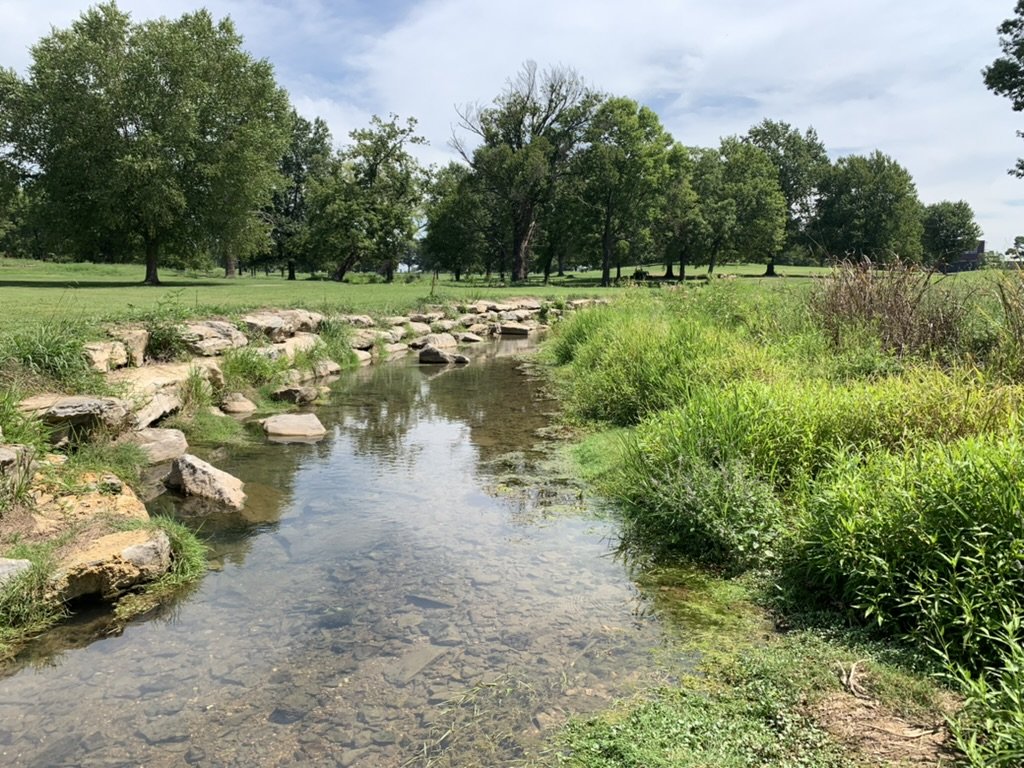
Residential LID
Low Impact Development or “LID” are methods and techniques that are used to slow down, spread out and soak in stormwater on site. Incorporating these practices reduces the amount of stormwater leaving your property and slows it down. - UADA
University of Arkansas Division of Agriculture Cooperative Extension Service (UADA)
When it rains, stormwater runs over impervious hard surfaces picking up pollutants such as yard debris, trash, fertilizers, vehicle fluids, and pet waste, which are washed into storm drains that connect to our local waterways.
LID and Green Infrastructure can help by soaking in stormwater and phytoremediating pollutants.
Green Infrastructure Cost Share Program at IRWP
The Green Infrastructure Program is a cost-share program. IRWP can fund up to 50% of all project costs. Landowners can generate match through in-kind labor, equipment, cash, or other grant dollars. Learn More
Detention pond retrofits
Bioswales
Permeable pavement and ribbon driveways
Green roofs
Green streets
Rain gardens
RESIDENTIAL LID PRACTICES
Rain Gardens
Rain gardens are landscaped depressions that collect rainfall. These bowl-shaped gardens are designed to capture stormwater runoff and allow it to slowly percolate into the soil, recharging groundwater and removing stormwater pollutants.
The garden’s flat bottom helps distribute rain water evenly across the planted area. Topsoil amended with compost and sand allows the water to slowly soak into the ground within a few days so there is no standing water to breed mosquitoes.
Re-Direct Downspouts
Downspouts transport stormwater away from buildings, often to a driveway or street into a storm drain that flows untreated to a creek. Interrupting the flow of stormwater runoff by keeping it on site and letting it soak into the ground, lessens the impact of stormwater downstream.
To slow stormwater runoff and reduce pollution, add a splash guard or extender to your gutter’s downspout to direct runoff to surfaces that can soak up water, such as a yard or garden. Washed out spots at the base of gutters can cause soil to wash away. Rain chains can be a simple, aesthetically pleasing alternative to downspouts that can minimize the velocity of stormwater.
Small Scale Bioswales
Also called a diversion berm, a bioswale is typically a vegetated channel with a parabolic or trapezoidal cross-section that can be used in place of a ditch to transport stormwater runoff from streets, parking lots and roofs. Vegetated bioswales can be planted with native grasses, shrubs, perennials, or a combination of these. Larger stone can also be used to break up concentrated flows of water and reduce velocity.
Porous Pavers
Sidewalks, driveways or even patios spaces can become areas that allow water to sink in rather than runoff. Pavers need to have sub-basin designs that provide a space for water to go as it passes through the pavers. Consider what long-term maintenance your pavers may require.
Rain Barrels
Rain barrels can be a creative option for redirecting downspouts with added perks. Harvesting stormwater with rain barrels can offer many benefits, including:
Reducing use of treated water for home irrigation
Lowering peak demands on public water systems
Reducing stormwater runoff volume and velocity (which reduces potential for further erosion downstream)
Get more information on how to make your own rain barrel
Cisterns have the capacity to harvest more water but can be more costly. What are your water needs?

IRWP Rain Garden Design and GRDA Rain Barrel sizing and installation tips.
Contact us about Residential Low Impact Development.
contact@irwp.org
(479) 203-7084
221 S Main St. / P.O. Box 205
Cave Springs, AR 72718
More Online Learning on Residential Low Impact Development
Check out Green Infrastructure to see how these practices are affecting your Northwest Arkansas communities.
Ozark Native Plants and Trees
Plant natives! Read why here: The Perfect Lawn (IRWP Stewardship Story)
NATIVE PLANT LISTS
Helpful lists for gardeners and landscapers in NW Arkansas, created by Wild Ones Ozark Chapter
Well Behaved Natives – Lissa Morrison
Native Plants for Shade – Lissa Morrison
Native Plants that Colonize — Lissa Morrison
Native Plants for Dry, Shallow, Rocky Soil – Lissa Morrison
Ornamental Native Grasses for Landscape Design — Lissa Morrison
Lists from other organizations
Top Butterfly & Moth Host Plants for Northwest Arkansas — National Wildlife Federation
Top Host Plants for Butterflies and Moths – Prairie Nursery
Riparian Tree and Shrub List – Beaver Watershed Alliance
Deer Resistant Native Plants – Shaw Nature Preserve
Deer Resistant Native Plants – Missouri Botanical Garden
Audubon Native Plants Database (with information on bird species attracted to each native plant listed)
Ozark Native Plants for Phytoremediation— Eric Fuselier
Ozark Native Plant Species for Phytotoremediation of Air Pollutants
Ozark Native Plant Species for Phytotoremediation of Petroleum
Ozark Native Plant Species for Phytotoremediation of Pesticides
Ozark Native Plant Species for Phytotoremediation of Chlorinated Solvents
Ozark Native Plant Species for Phytotoremediation of Heavy Metals
“HOW TO” RESOURCES
Rain Garden Fact Sheet – Beaver Watershed Alliance
Rain Garden Information – University of Arkansas Extension
Wildflower Site Preparation – Prairie Moon Nursery
How to Grow a Prairie from Seed – Prairie Moon Nursery
INFORMATION ON INVASIVE PLANT SPECIES
Commercially Available Invasive Plants in NW Arkansas – Arkansas Native Plant Society
Invasive Plant Species Found in Arkansas – Arkansas Natural Heritage Commission
Demonstration on Removing Bush Honeysuckle – Colin Massey from the University of Arkansas Agricultural Extension Office
ONLINE RESOURCES TO HELP WITH PLANT SELECTION
ONLINE RESOURCES FOR NATIVE PLANT INFORMATION
HORTICULTURAL PROFESSIONALS IN NORTHWEST ARKANSAS
Horticulture Professionals NWA (Provided by Ozark Wild Ones, uploaded May 2023)
Permeable Surfaces
Impermeable surfaces such as asphalt of parking lots and concrete sidewalks create runoff, which picks up pollutants and pours into our stormwater drainage systems. By reducing the amount of impermeable surfaces in our cities, we reduce the amount of polluted runoff that enters our rivers. You will find that permeable solutions are cost-effective and can even increase the longevity of those areas.
Rain Gardens and Bioswales
Rain gardens and bioswales are vegetated areas created to catch stormwater runoff. By allowing the runoff to soak into the ground rather than running into the drainage system, more pollutants are filtered out. Rain gardens and bioswales are attractive additions that promote plant, insect, and wildlife habitation.
Green Roofs
Vegetated roofs are also called "green roofs". These are designed to-- you guessed it, soak up rainwater! Working as a great insulator, a green roof is a great option for commercial buildings and residences alike. Green roofs are also used to grow food in urban areas.
Rain Barrels
A rain barrel is used to collect rainwater from rooftops. Water harvested in a rain barrel can be used to water yards and gardens. Rain barrels are fairly easy to construct and easy to maintain. They are a great conservation tool that can be used to help in eliminating stormwater runoff. Click here for instructions on how to construct a rain barrel. Click here for a video with instructions on constructing and installing a rain barrel.
Other Homeowner Tips for Water Quality
Yard Waste
Did you know that grass clippings and leaf litter are stormwater pollutants? (Flyer)
If yard waste such as grass clippings and leaves enters our storm drains, it flows untreated directly to creeks, streams, and lakes. As yard waste breaks down, nutrients that are released can lead to water pollution. High levels of nutrients create more food for plants. In water, this plant food increases algae growth.
High levels of algae growth, called blooms, decrease oxygen in the water. Without oxygen fish and other aquatic animals can’t survive and recreational activities may decrease.
You can stop yard waste from ever entering a storm drain or waterway with the following practices:
Compost your yard waste into rich humus and reuse in your landscaping and gardening.
Grasscycle - Simply leave your grass clippings on your lawn to return nutrients and moisture back to your soil.
Rake, sweep or blow leaves and grass back onto your lawn.
Keep yard waste off the streets, sidewalks, and driveways, and gutters.
Properly dispose of your yard waste. Find out if your city or county provides pick-up or drop-off locations for yard waste.
Source: University of Arkansas Extension
Live by the Water? Prevent Algae Blooms with Lake (and River)-Friendly Lawn Care
Vehicle Washing
Follow these recommended best practices for vehicle washing:
Wash at a car wash or a self-serve car wash if possible. Most car washes have water-saving, high efficiency spray nozzles. According to the International Car Wash Association, the average person washing a vehicle at home uses a whopping 80 to 140 gallons of water, as opposed to the 45 typically used at a car wash.
Another reason to prioritize using the car wash: Car washes can recycle, reuse, and/or treat the used water. The rinse water from washing a car contains far more than just dirt, dust and potentially toxic soap. It can be contaminated with heavy metals such as copper from brake pads and zinc from tires, not to mention residue from exhaust fumes, gasoline and motor oils.
If you must wash your car at home, be sure to do it on the grass (away from septic lines)— avoid doing it on concrete or asphalt… especially if you are right next to a storm drain where all of those chemicals get washed into creeks. Dump your bucket of used water down a sink or the tub inside the home.
Pay attention to your tools and chemicals. Use eco-friendly soaps that are nontoxic, biodegradable, and free of phosphates, fragrance, chlorine, and petroleum-derived ingredients at home or at the self-serve carwash. Avoid acid-based wheel cleaners and rinse-off degreasers for wheels or engines. Invest in good reusable rags and sponges that will withstand many cleanings.
Septic Care
Be careful with what you pour or flush down your drains, use water efficiently, protect the drainfield, and have your system regularly pumped & inspected. For more information, please see EPA SepticSmart guidance provided here or visit our septic maintenance information to get more in-depth information. Read about Septic Myths on our blog.
Other Recommended Practices for Improving Water Quality
1. Fix your leaky vehicles!
2. Pick up your pet's waste.
3. Only water down the drains and storm drains
4. Pick up trash and litter.










